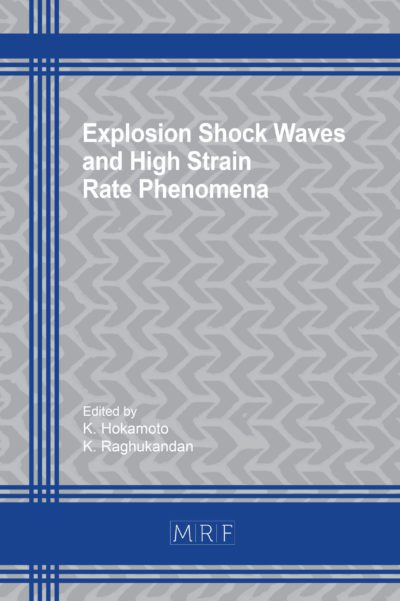Comparison of different machine control modes during friction extrusion of AA2024
Harikrishna Rana, Chang Chan, Uceu F.H. Suhuddin, Noomane Ben Khalifa, Benjamin Klusemann
Abstract. The friction extrusion process has recently been explored for manufacturing extrudates with unique microstructures and improved material properties. The process can be classified as a severe plastic deformation (SPD) process in which the compressive shear strains and friction-induced heat play a key role in achieving an intensely refined microstructure. The microstructure can be orchestrated by distinctive heating and plastic deformation conditions from different process parameters, viz. extrusion force, extrusion speed, spindle rotation speed, etc. Notably, the process dynamics lead to different strains and temperatures across the traverse and longitudinal sections of the extrudates, eventually resulting in distinctive microstructures. The present work focuses on comparing the responses of two different machine control modes viz., force and displacement control. The extrudate produced using displacement-control mode exhibited superior process stability, whereas force-control mode resulted in a more unstable process characterized by fluctuating spindle torques, varying extrusion speeds, and elevated temperatures, ultimately leading to lower extrudate quality. These process variabilities were reflected in the microstructures of the extrudates, particularly in the grain structures and defect formations.
Keywords
Friction Extrusion, Aluminum, Displacement-Control, Force-Control
Published online 5/7/2025, 8 pages
Copyright © 2025 by the author(s)
Published under license by Materials Research Forum LLC., Millersville PA, USA
Citation: Harikrishna Rana, Chang Chan, Uceu F.H. Suhuddin, Noomane Ben Khalifa, Benjamin Klusemann, Comparison of different machine control modes during friction extrusion of AA2024, Materials Research Proceedings, Vol. 54, pp 772-779, 2025
DOI: https://doi.org/10.21741/9781644903599-83
The article was published as article 83 of the book Material Forming
![]() Content from this work may be used under the terms of the Creative Commons Attribution 3.0 license. Any further distribution of this work must maintain attribution to the author(s) and the title of the work, journal citation and DOI.
Content from this work may be used under the terms of the Creative Commons Attribution 3.0 license. Any further distribution of this work must maintain attribution to the author(s) and the title of the work, journal citation and DOI.
References
[1] R.Z. Valiev, N.A. Krasilnikov, N.K. Tsenev, T.G. Langdon, Plastic deformation of alloys with submicron-grained structure, Prog Mater Sci 137 (2006) 881–981. https://doi.org/10.1016/0921-5093(91)90316-F
[2] U.F.H. Suhuddin, L. Rath, R.M. Halak, B. Klusemann, Microstructure evolution and texture development during production of homogeneous fine-grained aluminum wire by friction extrusion, Mater Charact 205 (2023) 1-13. https://doi.org/10.1016/j.matchar.2023.113252
[3] L. Rath, U.F.H. Suhuddin, B. Klusemann, Comparison of Friction Extrusion Processing from Bulk and Chips of Aluminum-Copper Alloys, 926 (2022) 471–480.
[4] X. Li, C. Zhou, N. Overman, X. Ma, N. Canfield, K. Kappagantula, J. Schroth, G. Grant, Copper carbon composite wire with a uniform carbon dispersion made by friction extrusion, J Manuf Process 65 (2021) 397–406.
[5] S.A. Whalen, K.S. Kappagantula, X. Li, N.R. Overman, M.J. Olszta, T. Wang, D.R. Herling, S.R. Suffield, T.J. Roosendaal, B.S. Taysom, Shear assisted processing and extrusion (shape) of aluminum alloy 7075, 2024, and al-12.4 tm, Pacific Northwest National Lab.(PNNL), Richland, WA (United States) (2021).
[6] V.N.S.U. Viswanath Ammu, I. Raju, R.N. Chouhan, A. Agnihotri, Effect of ram speed on surface quality and mechanical properties during extrusion of AA2024 alloy, Mater Today Proc 113 (2024) 258–263. https://doi.org/https://doi.org/10.1016/j.matpr.2023.09.146
[7] S. Whalen, M. Olszta, M. Reza-E-Rabby, T. Roosendaal, T. Wang, D. Herling, B.S. Taysom, S. Suffield, N. Overman, High speed manufacturing of aluminum alloy 7075 tubing by Shear Assisted Processing and Extrusion (ShAPE), J Manuf Process 71 (2021) 699–710.
[8] D. Baffari, A.P. Reynolds, X. Li, L. Fratini, Influence of processing parameters and initial temper on Friction Stir Extrusion of 2050 aluminum alloy, J Manuf Process 28 (2017) 319–325.
[9] W. Tang, A.P. Reynolds, Production of wire via friction extrusion of aluminum alloy machining chips, J Mater Process Technol 210 (2010) 2231–2237.
[10] M. Reza-E-Rabby, X. Li, G. Grant, S. Mathaudhu, A. Reynolds, Process parameters and system responses in friction extrusion, J Manuf Process 85 (2023) 21–30. https://doi.org/10.1016/j.jmapro.2022.11.027
[11] K.N. Salloomi, L.A. Sabri, Y.M. Hamad, S.N. Mohammed, 3-Dimensional nonlinear finite element analysis of both thermal and mechanical response of friction stir welded 2024-T3 aluminium plates, Journal of Information Engineering and Applications 3(9) (2013) 6–15.
[12] A. Bhaduri, Mechanical properties and working of metals and alloys, Springer, 264 (2018) 599-646, https://doi.org/10.1007/9
[13] G. Diyoke, L. Rath, R. Chafle, N. Ben Khalifa, B. Klusemann, Process simulation of friction extrusion of aluminum alloys, in: Materials Research Proceedings, Association of American Publishers, 28 (2023) 487–494. https://doi.org/10.21741/9781644902479-53













